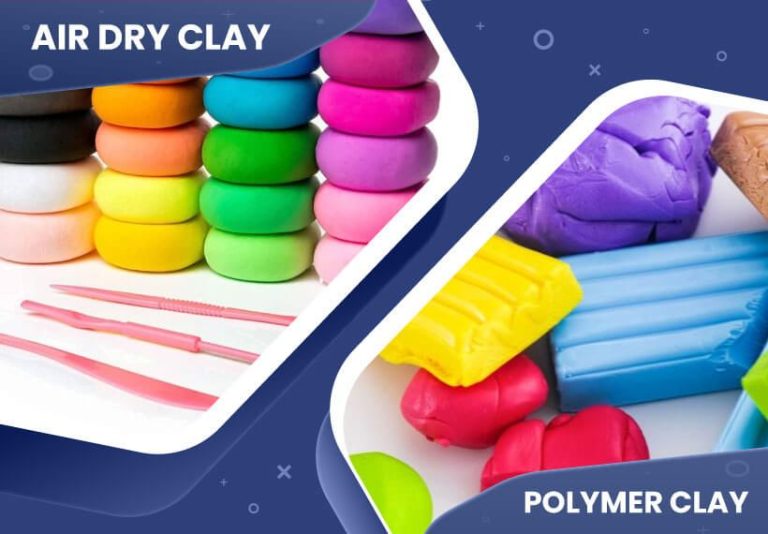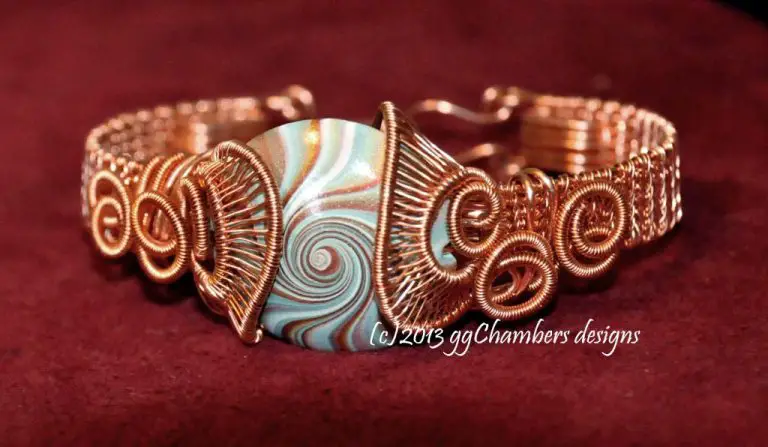Why Are Clay Beads So Popular?
The Growing Popularity of Clay Beads
Clay beads have become an increasingly popular crafting material and jewelry component in recent years. Their versatile nature allows them to be molded into diverse shapes and customized designs. Both children and adults find working with clay beads to be a satisfying and therapeutic hobby. Their organic imperfections provide a handmade feel that machine-made materials often lack. Beyond crafting, clay beads are also prized for jewelry making due to their organic texture, myriad colors, and affordability. The ability to create personalized designs at reasonable prices helps explain the rising popularity of these natural clay beads.
History
Clay beads have a long and rich history that dates back thousands of years. Archaeologists have discovered clay beads at sites in ancient civilizations across the world including Egypt, Greece, Rome, China, and the Indus Valley. This shows that clay beads have been crafted and valued across cultures for millennia.
The oldest known clay beads have been found at Neolithic and Paleolithic sites, with some dating back over 30,000 years. These early beads were made from simple rolled and shaped clay. Ancient beads served purposes from decoration and jewelry to currency and ritual. As tools and techniques advanced, more intricate and elaborate clay beads were developed.
By 3,000 BCE, Sumerians in Mesopotamia were crafting geometrically shaped clay beads and engraving them with designs. Around this same time, Egyptians were making glazed clay beads, and the Chinese were firing and glazing beads made from porcelain clay. The popularity and availability of clay beads continued to increase into ancient Greek, Etruscan, and Roman societies where they were widely used in jewelry and ornamentation.
Types
There are several common types of clay used to make beads:
Polymer Clay – This type of clay is made from polymers like vinyl and PVC. It’s very flexible and easy to work with. Polymer clay comes in a rainbow of colors and can be mixed together to create custom shades. It’s lightweight and durable when baked in an oven.
Air-Dry Clay – As the name suggests, air-dry clay dries naturally at room temperature without requiring heat from an oven. It’s an accessible option for beginners and kids. Air-dry clay is soft, making beads easy to mold by hand or with basic tools.
Modeling Clay – Modeling clay is an affordable, non-hardening clay. It has a smooth, malleable texture that’s enjoyable for tactile art projects. Modeling clay beads won’t hold their shape permanently unless a sealant is applied.
Sculpey Clay – A popular brand of polymer clay, Sculpey comes in standard and specialty blends like translucent, metallic, and glow-in-the-dark. The versatility of Sculpey makes it a top choice for artisans.
Fimo Clay – Similar to Sculpey, Fimo is a lightweight polymer clay suitable for delicate beadwork. It has a creamier consistency and needs extra conditioning before use. When cured, Fimo develops a hard, durable finish.
Making Process
Clay beads are made from natural clay that is mixed with water to achieve the desired consistency. The clay is rolled into long tubes or cylinders and then cut into small bead-sized pieces. The beads are shaped by hand or with molds to create the desired designs. They are dried slowly to avoid cracking and then fired in a kiln at high temperatures to harden and set the clay. The firing process can take several hours at temperatures ranging from 1800-2200 degrees Fahrenheit depending on the clay type. Once fired, the beads can be glazed or painted and fired again to seal and decorate the surface. The glazes melt and fuse to the clay in the kiln, creating a glossy finish. Some clays can also be fired unglazed to achieve a natural, matte look. The firing and glazing processes are crucial to properly hardening the clay and bringing out the bright, finished colors. With handmade techniques perfected over centuries, artisans are able to produce endless varieties of detailed and durable clay beads.
Design Flexibility
One of the key reasons for the popularity of clay beads is the immense design flexibility they offer. Clay is an incredibly versatile material that can be molded into virtually any shape imaginable. Skilled artisans can craft clay beads into simple round or tube shapes, intricate carved designs, realistic plant and animal shapes, abstract geometric patterns, and much more.
Clay beads can be made in any size, from tiny seed beads just a few millimeters across to large focal beads over an inch long. The holes through clay beads can be crafted in different diameters as well. This versatility allows for unlimited options when stringing and combining clay beads into jewelry or other decorative pieces.
Clay beads can also be painted, stained, or glazed in infinite colors and finishes. Plain terra cotta clay can be brightened up with glossy glazes in vibrant hues. More subdued looks can be achieved with natural earthy stains. Metallic finishes like gold, silver, and copper can create dazzling effects on clay beads. Even the surface texture can be modified from smooth to bumpy. With so many possible variations, clay beads offer remarkable design flexibility for artists and crafters.
Texture
One of the main appeals of clay beads is their tactile quality. The texture of clay has a smooth yet slightly gritty feel, which many find soothing. Unlike glass or metal beads, clay beads have a certain organic, earthy texture that comes from natural clay itself.
The texture also varies depending on the type of clay used. Beads made from porcelain generally have a finer, smoother texture compared to those made from stoneware or terra cotta clays. The firing process can also alter the texture, with higher firing temperatures resulting in a more vitrified, smooth surface.
Clay’s malleability allows artisans to add decorative textures and patterns to the beads as well. Beads can be molded, carved, or impressed with designs that add tactile interest. The texture provides visual interest but also makes the beads pleasing to handle and run through one’s fingers. For many, there is a therapeutic value in the very feel of clay.
Affordability
One of the reasons clay beads have become so popular is their relatively inexpensive cost. When compared to other materials like gemstones, precious metals, and glass, polymer and air-dry clay is very budget friendly. Companies are able to mass produce polymer clay beads at a low per-unit cost, keeping prices down. Even high quality, handmade, artisan clay beads are generally quite affordable. Some clays like air-dry clay are among the most cost effective craft materials out there. This has made working with clay and clay beads accessible to crafters and jewelry makers of all income levels.
The low cost has enabled many small businesses and Etsy shops to find success selling clay beads and supplies. For shoppers, it means being able to inexpensively amass a large collection of diverse beads in different styles, shapes, and colors. Especially during times of economic uncertainty, the affordability provides a creative outlet without breaking the bank. Ultimately, it has allowed clay beads to proliferate and find their way into the hands of jewelers, crafters, and DIYers everywhere.
Customization
One of the best things about clay beads is the ability to fully customize and personalize them. You can create your own unique designs from scratch using modeling clay or polymer clay. Or you can decorate and embellish pre-made clay beads by painting them, adding texture, attaching charms, beads or found objects, etc. The creative possibilities are endless.
Making your own clay beads allows you to have complete control over the size, shape, color and pattern. You can sculpt beads into any form you desire – geometric shapes, animals, flowers, letters, symbols. You can blend and mix custom colors into the clay. You can roll out canes with intricate designs to slice into beads. You can impress objects into the clay to leave behind patterns and textures. The end result is a set of one-of-a-kind beads that reflect your personal style.
Even with pre-made clay beads you can add your own creative flair by painting, glazing, or baking them with mica powders to add shimmer and color. You can wrap them with colorful threads, attach dangling charms, or glue on tiny embellishments. The ability to customize basic clay beads makes them uniquely yours.
For many crafters and artisans, the limitless customization is what makes working with clay beads so enjoyable. You become both designer and maker. Plus being able to make beads that perfectly match your jewelry design or coordinate with a specific outfit is a big benefit. Clay beads let you translate your creative vision into reality through the power of personalization.
Therapeutic Value
One of the reasons clay beads are so popular is because of their soothing, therapeutic nature. Working with clay and clay beads can have a calming, centering effect. There’s something about the tactile experience of touching and shaping clay that helps relax the mind and body.
Clay beads can be used to make jewelry or other crafts in a therapeutic setting. The repetitive actions of rolling, cutting, and smoothing clay beads can induce a meditative state. Focusing on the textures and sensations of the clay can help redirect anxious thoughts and provide a creative outlet. Many art therapists incorporate clay beads into their sessions for these reasons.
Beyond structured therapeutic environments, many people find working with clay beads to be a calming personal hobby. The ability to shape simple beads into beautiful adornments provides a sense of accomplishment. Having tangible creations to show for one’s efforts can be very fulfilling. With practice, clay beads can even be sculpted into intricate organic shapes, providing an endless creative challenge.
In summary, molding and crafting clay beads offers therapeutic benefits at many levels. From the calming tactile sensations to the satisfaction of completing handmade objects, clay beads can enhance relaxation, focus, and fulfillment.
Conclusion
In conclusion, clay beads have grown tremendously in popularity for a variety of compelling reasons. Their rich history and cultural significance gives them an appeal that connects us to past generations of artisans and traditions. The range of bead types, from powdery polymer clay to earthy stoneware clay, provides versatility for crafters and designers. The process of making beads allows for artistic expression through sculpting, texturing, painting, and more. Clay’s moldability enables unlimited shapes and durable designs. The matte finish and natural texture sets clay beads apart with a beautiful, organic look. Most types of clay cost very little, keeping beads affordable for jewelry makers and collectors. Custom designs make for one-of-a-kind, personal pieces. And finally, working with clay and beads offers therapeutic benefits by reducing stress and focusing the mind. For all these reasons, clay beads continue to capture the imagination across cultures and eras. Their enduring popularity springs from clay’s natural beauty, versatility, and the joy of creativity.


